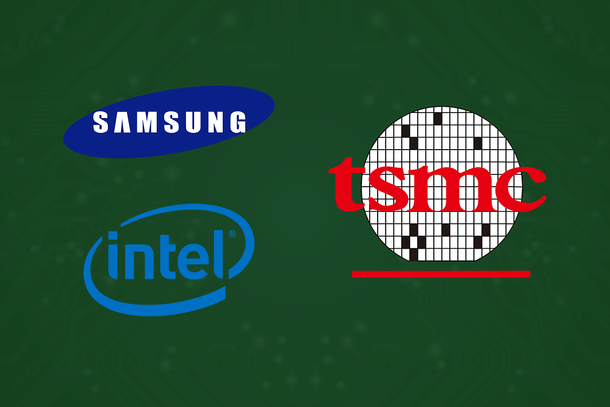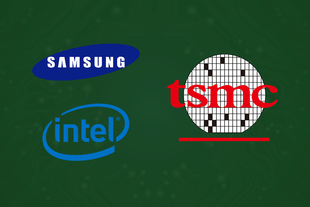Tech
How Contract Semiconductor Chip Manufacturing Is Faring This Year
Swarajya Staff
Oct 04, 2022, 11:44 AM | Updated 11:44 AM IST
Save & read from anywhere!
Bookmark stories for easy access on any device or the Swarajya app.


The top 10 foundries fetched revenue of $33.20 billion in the second quarter of 2022 — a 3.9 per cent increase from $31.96 billion in the previous quarter.
The estimates were released by market analysis group TrendForce.
Taiwan Semiconductor Manufacturing Company (TSMC) posted a second-quarter revenue of $18.15 billion. However, quarterly growth rate contracted to 3.5 per cent due to wafer mark-ups inflating the first-quarter revenue base period.
Swarajya had earlier reported that TSMC surpassed Intel in second-quarter revenue and that it may surpass Samsung in the third quarter. Perhaps, for the first time, we will see a pure-play foundry occupy the top spot in quarterly semiconductor revenue.
Samsung's foundry business was the only one among top 10 foundries estimated to have registered negative growth (negative 3.9 per cent) in the first quarter compared to fourth quarter 2021. It has recovered with 4.9 per cent growth in second quarter this year.
As reported in Swarajya, Samsung is the first, and so far the only foundry, to have announced 3 nm chip production. But according to TrendForce, "The 3nm node is not expected to contribute to revenue until the end of 2022, at the earliest."
Taiwan-based companies United Microelectronics Corporation (UMC) and Vanguard International Semiconductor Corporation (VIS) posted the highest growth of 8.1 per cent and 7.9 per cent respectively.
VIS' growth was partly "driven by factors such as increases in average selling price and production expansion."
Part of the reason attributed to UMC's growth is that "its new 28/22nm production capacity went online smoothly in 2Q22 driving the growth of overall wafer shipments and ASP."
UMC had earlier expressed concerns of possible "over capacity" for 28 nm in a few years.
"On the supply side, based on the announced capacity expansion plan, we do see the oversupply situation at 28nm to happen beyond 2023, not before 2023," UMC president Jason Wong said in January this year.
Year-on-year Comparison
A comparison with the second quarter of 2021 throws up some interesting findings.
The total revenue of the top 10 foundries was $24.4 billion last year. The second-quarter figure this time around is 36 per cent higher, affirming the massive growth that foundries have enjoyed in 2021-22. (It may have mostly plateaued by now.)
Nexchip, a joint-venture between Hefei City Construction Investment Holding (Group) Co Ltd and Holding and Taiwan's Powerchip Technology Corporation, was not among the top 10 in second quarter last year.
But it recorded growth of 44.2 per cent in fourth quarter 2021 and 26 per cent in first quarter 2022, thereby pushing South Korean DB HiTek out of the top 10 and Israel-based Tower Semiconductor (in the process of being acquired by Intel) to the tenth spot.
Nexchip registered smaller growth of 4.5 per cent in second quarter this year.
As reported earlier, China's biggest foundry, Semiconductor Manufacturing International Corporation (SMIC), was also among the top four to have achieved most growth for full year 2021.
SMIC had 16.6 per cent growth in first quarter 2022, but it has been reduced to 3.3 per cent in the second quarter.
The overall reduction in the percentage of revenue growth for foundries is a fallout of the slowdown in the semiconductor market in general.
As per some analysts, the semiconductor market, which was around $590 billion in 2021, will show growth of only 4 per cent in 2022 and there will be a decline of about 22 per cent in 2023.
However, growth is predicted to be back on track from 2024 onwards and the market is predicted to reach $1 trillion by 2032, a couple of years later than earlier predictions.
In 2021, out of the nearly $590 billion semiconductor revenue overall, foundry revenue was estimated to be anywhere between $100 billion and $108 billion.
One analyst recently predicted that it is expected to grow at a compound annual growth rate (CAGR) of 7.55 per cent for the next six years and reach $161 billion by 2028.
Going by TrendForce numbers, the top 10 foundries that take up 98 per cent market share have achieved $65 billion in revenue for the first half of 2022 already.
Even if revenues slow down in the second half, we are likely to see foundry revenue for all of 2022 inch closer to $120 billion.





